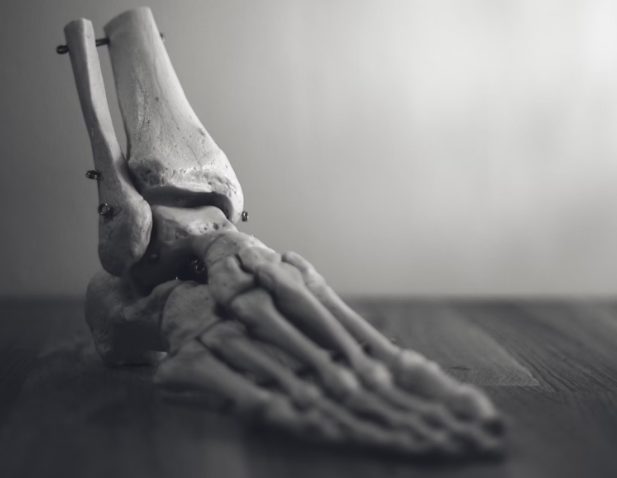How to repair a damaged wrestling trophy?
The step-by-step guide titled “How to repair a damaged wrestling trophy?” aims to provide instructions on fixing a wrestling trophy that has been damaged. Wrestling trophies hold sentimental value and are often a symbol of accomplishment for wrestlers. This guide aims to help individuals restore their damaged trophies and preserve their significance. It provides a clear and concise set of instructions, allowing readers to follow each step carefully and successfully repair their wrestling trophy.
Gather the necessary materials
Gather the necessary materials:
- Inspect the damaged wrestling trophy: Begin by carefully examining the trophy to identify the extent of the damage and the missing pieces. Take note of any cracks, chips, or broken parts that need to be repaired or replaced.
- Find a suitable glue for the trophy material: Once you have assessed the damage, search for a glue that is compatible with the material the trophy is made of. For example, if the trophy is made of metal, look for a strong adhesive suitable for metal bonding. If it is made of ceramic or glass, opt for a glue specifically designed for these materials.
- Acquire any missing pieces or replacement parts: If the trophy is missing any pieces, such as a wrestler figurine or an engraved plate, make a list of the items you need to replace. Search for stores or online retailers that sell wrestling trophy components and order the required parts. Ensure they match the size and style of the original trophy.
- Prepare additional tools: Depending on the repair requirements, gather any additional tools you may need. These could include a small paintbrush for applying glue, sandpaper for smoothing rough edges, or a craft knife for precise adjustments.
By following these instructions, you will be well-prepared to repair the damaged wrestling trophy. Remember to handle the materials and tools with care to avoid further damage and ensure a successful restoration.
Clean the damaged area
To thoroughly clean the damaged area of the trophy, follow these easy steps:
- Prepare a gentle soap and water solution by mixing a small amount of mild soap with warm water.
- Dip a soft cloth or sponge into the soapy solution, ensuring it is damp but not dripping.
- Gently rub the cloth or sponge over the damaged area, applying light pressure to remove any dirt, dust, or contaminants.
- Pay extra attention to any crevices or intricate details on the trophy, using a soft-bristle toothbrush if necessary to reach those hard-to-reach spots.
- Rinse the cloth or sponge thoroughly and wipe away any excess soap residue from the trophy.
- Finally, pat dry the cleaned area with a clean, lint-free cloth, ensuring no moisture is left behind.
For example, if the trophy has a small scratch on its surface, the user would first mix the soap with warm water, wet the cloth in the solution, and gently rub it over the scratch in circular motions. They would then rinse the cloth, wipe away the soap residue, and pat dry the area to prevent any water spots.
By following these instructions and taking the time to clean the damaged area properly, the trophy will be ready for the repair process, ensuring optimal results.
Apply the glue
- Prepare the damaged area: Clean the damaged area of the trophy to remove any dust, dirt, or debris. Ensure the surface is dry and smooth for better adhesion.
- Choose the appropriate glue: Select the appropriate glue based on the material of the trophy. For metal trophies, use a metal adhesive; for plastic trophies, use a plastic adhesive. Read the instructions on the glue container to ensure compatibility.
- Apply a small amount of glue: Squeeze a small amount of the adhesive onto a clean, disposable surface. Use a toothpick or a small brush to pick up a small portion of the glue.
- Ensure even coverage: Gently spread the glue onto the damaged area of the trophy, applying it evenly. Use the toothpick or brush to reach into crevices or tight spots for precise application. Avoid using excessive glue, as it may cause messiness or unwanted smudges.
- Press and hold: Once the glue is applied, carefully align and press the damaged parts of the trophy together. Hold them firmly in place for the recommended amount of time specified on the glue container. This will allow the adhesive to bond effectively.
- Allow proper drying time: After pressing the damaged parts together, let the glue dry completely according to the instructions provided on the adhesive container. Avoid moving or using the trophy until the recommended drying period has passed.
- Clean excess glue: If any excess glue squeezes out during the bonding process, gently wipe it away with a damp cloth or sponge before it dries.
- Inspect and test: After the glue has dried, inspect the repaired area to ensure it is securely bonded. Gently test the repaired part to verify its strength and stability.
- Repeat if necessary: If the bonding is not satisfactory, repeat the process by applying more glue to reinforce the repair. Follow the previous steps to ensure a proper bond.
- Dispose of materials: Dispose of any used toothpicks, brushes, or excess glue responsibly according to local waste management guidelines.
Remember to exercise caution while working with glue and follow the manufacturer’s instructions for safe usage.
Align and hold the pieces
To align and hold the pieces of the damaged trophy, follow these steps. First, carefully position the broken parts together, ensuring they fit exactly as they should. Next, hold the pieces firmly together for the recommended time specified on the glue packaging. This will allow the adhesive to bond properly. If needed, use tape or clamps to secure the pieces in place while the glue sets. Make sure the tape or clamps are tight enough to keep the parts from moving, but not so tight that they cause damage. Once the glue has fully dried and set, remove the tape or clamps and check if the pieces are securely attached.
Allow the glue to dry
- Find a suitable location: Choose a well-ventilated area, such as a room with open windows or a space with a ceiling fan. Ensure there is enough space to accommodate the trophy without it being in close proximity to other objects.
- Place the trophy carefully: Set the trophy on a stable surface, such as a table or countertop, ensuring it is balanced and secure. Make sure the surface is clean and free from any dust or debris that could interfere with the drying process.
- Set the recommended time: Consult the glue manufacturer’s instructions or the adhesive packaging to determine the recommended drying time. This duration may vary depending on the type of glue used. Follow these guidelines for optimal results.
- Avoid touching or moving the trophy: Once the glue has been applied, refrain from touching or moving the trophy until the recommended drying time has elapsed. Even slight disturbances can disrupt the bonding process and compromise the adhesive’s effectiveness.
- Monitor the drying progress: While the trophy is drying, periodically check its condition from a safe distance. Look for any signs of excessive moisture, uneven drying, or other issues that may require attention. If necessary, adjust the ventilation or temperature in the room to ensure proper drying.
Remember, patience is key when allowing the glue to dry. Rushing the process may result in a weaker bond and potential damage to the trophy. So, give the adhesive sufficient time to fully cure and dry before handling or displaying the trophy.
Clean up any excess glue
- Gently remove excess glue: After the glue has dried, take a soft cloth or a cotton swab and carefully remove any excess glue from the repaired area. Apply light pressure to avoid damaging the surface.
- Dip a cotton swab in a gentle solvent: If the excess glue is stubborn and difficult to remove with just a cloth, dip a cotton swab in a gentle solvent, such as rubbing alcohol or nail polish remover. Make sure the solvent is suitable for the material you are working with.
- Wipe the excess glue away: Using the cloth or cotton swab, gently wipe away the excess glue. Be patient and take your time to avoid causing any damage to the repaired area.
- Avoid excessive force: While cleaning, be careful not to apply excessive force that could potentially damage the repaired surface. Use gentle and controlled motions to remove the excess glue.
- Inspect the repaired area: Once you have removed the excess glue, inspect the repaired area to ensure no residue or glue residue remains. If necessary, repeat the process until the area is clean and free of any excess glue.
Remember to always exercise caution when cleaning up excess glue to prevent any unintended damage to the repaired surface.
Inspect and touch up
Inspect the repaired area of the trophy to ensure that it is securely fixed. Carefully examine the repaired section, checking for any signs of weakness or instability. Gently tug on any loose parts to ensure they are properly attached. Inspect the joints and edges for any gaps or unevenness. If you notice any imperfections, it is essential to touch them up to achieve a seamless finish.
To touch up any imperfections, start by cleaning the repaired area with a soft cloth or brush to remove any dust or debris. Next, assess the type of imperfection you are dealing with. If there are minor scratches or scuffs, you can use a fine-grit sandpaper to gently smooth out the surface. Be careful not to apply excessive pressure, as this may damage the surrounding area.
For deeper imperfections, such as chips or cracks, you will need to apply a filler material. Select a suitable filler that matches the material of the trophy, such as epoxy or wood filler. Apply the filler to the imperfection using a putty knife, ensuring it fills the gap completely. Allow the filler to dry according to the manufacturer’s instructions. Once dry, use sandpaper to carefully smooth the filled area until it is level with the surrounding surface.
After touching up any imperfections, consider applying a protective sealant to preserve the repair. This will help safeguard the repaired area against future damage and keep it looking its best. Choose a sealant that is compatible with the material of the trophy, such as a clear lacquer or varnish. Apply the sealant evenly and follow the manufacturer’s instructions for drying and curing times.
Remember, thorough inspection and touch-up are crucial to ensure the repaired area of the trophy is securely fixed and looks flawless. Take your time and follow these steps carefully to achieve the best results.
Restoring lost glory
In conclusion, repairing a damaged wrestling trophy is a task that requires careful attention and precision. This guide has provided step-by-step instructions on how to restore the trophy to its former glory. It is crucial to follow each step diligently, as any negligence can further damage the trophy. By using the right materials and techniques, anyone can successfully repair a damaged wrestling trophy and preserve its sentimental value. Remember, patience and precision are key in this process.





In addition to using glue, I’ve also found success in using epoxy resin to repair damaged wrestling trophies. It provides a strong and durable bond, and it’s especially useful when dealing with larger or more complex damages. However, it does require a longer drying time compared to regular glue. It would be great if the guide mentioned this alternative method for others to consider!
Thank you for sharing your variation using epoxy resin to repair wrestling trophies. That’s a great suggestion! I focused on using glue in this guide as it’s a more common and easily accessible option for most people. However, epoxy resin can indeed be a fantastic alternative, especially for larger or more complex damages. I appreciate you mentioning it, and I’m sure others will find it useful too!
I followed this guide to repair my son’s wrestling trophy and it worked perfectly! The steps were easy to follow and the materials listed were all readily available. After applying the glue and holding the pieces together, the trophy looked as good as new. Thank you for this helpful guide!
I had some trouble with step 3 of the guide. When I applied the glue, it didn’t hold the pieces together firmly. I’m not sure if I used the wrong type of glue or if there’s something else I’m doing wrong. Any advice on troubleshooting this issue would be greatly appreciated!
I’m sorry to hear that you encountered difficulties with the glue not holding the pieces together firmly. It’s possible that you may have used the wrong type of glue for the material of the trophy. Make sure to use a strong adhesive specifically designed for repairing trophies or similar materials. If you’re still experiencing issues, you can try cleaning the damaged area more thoroughly before applying the glue or using a clamp to hold the pieces together while the glue dries. I hope this helps!